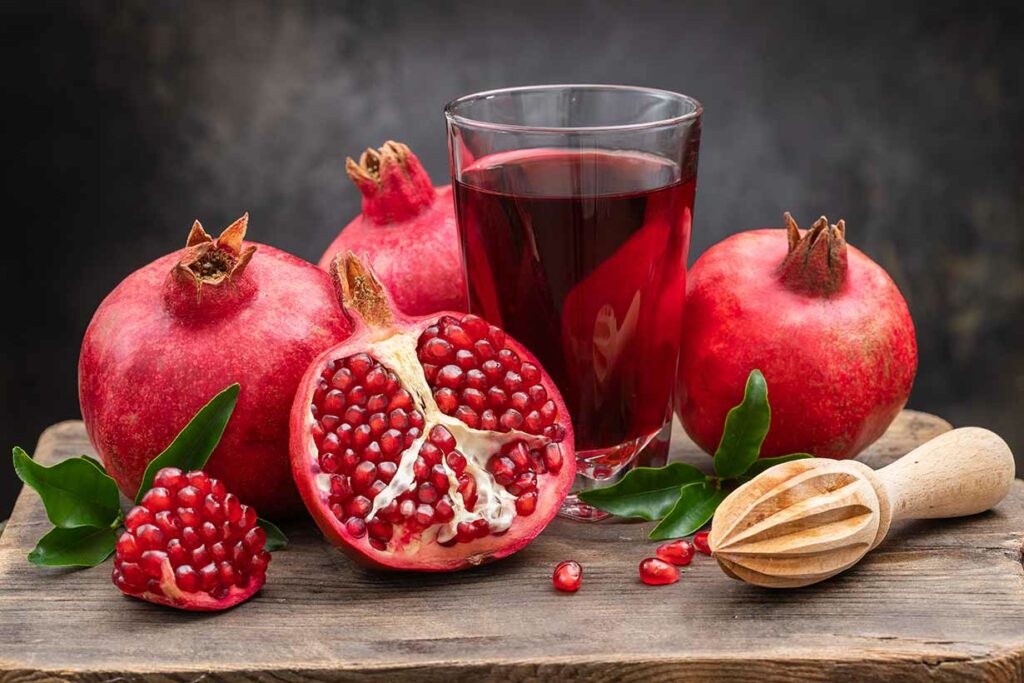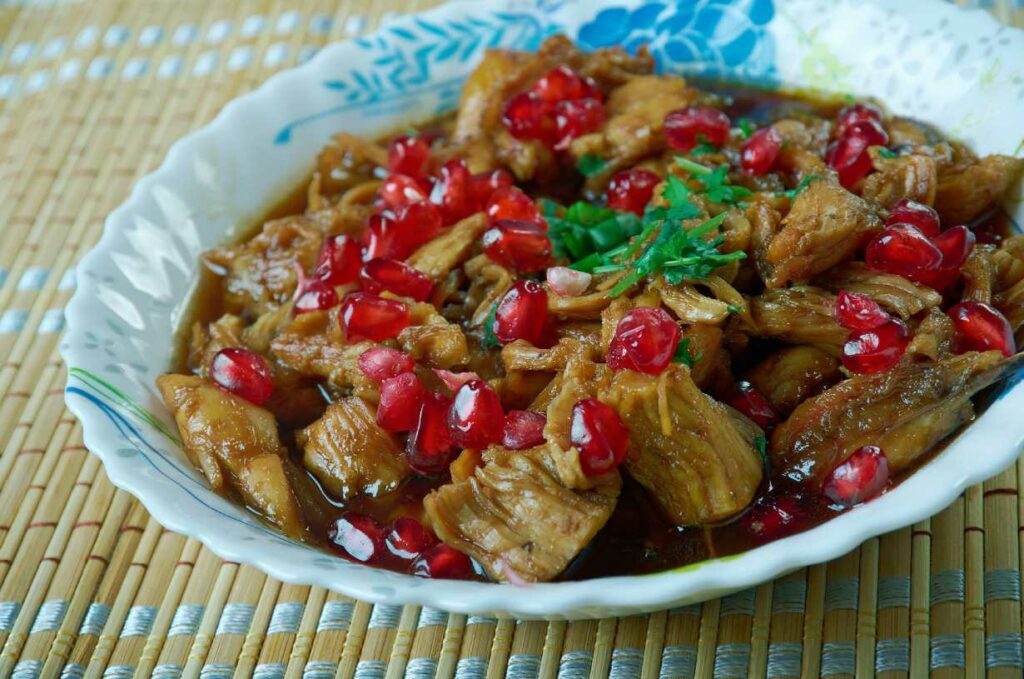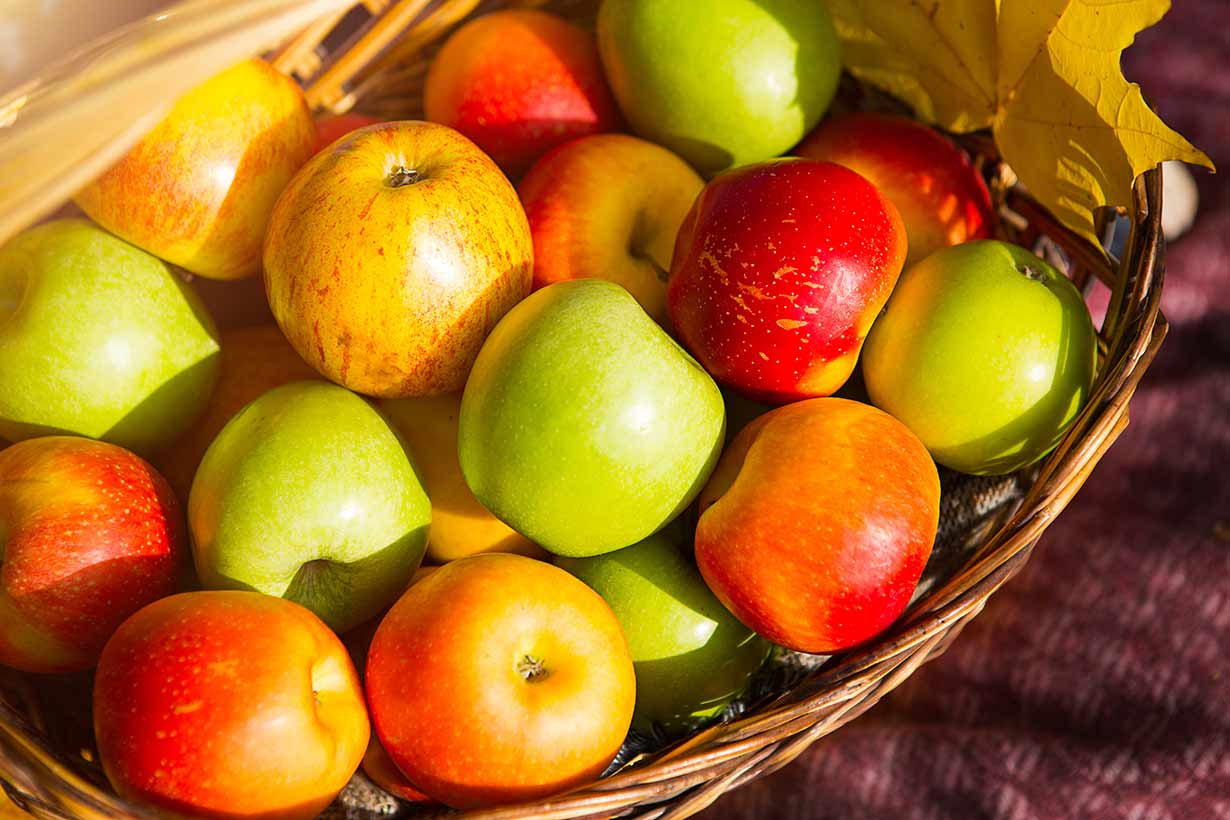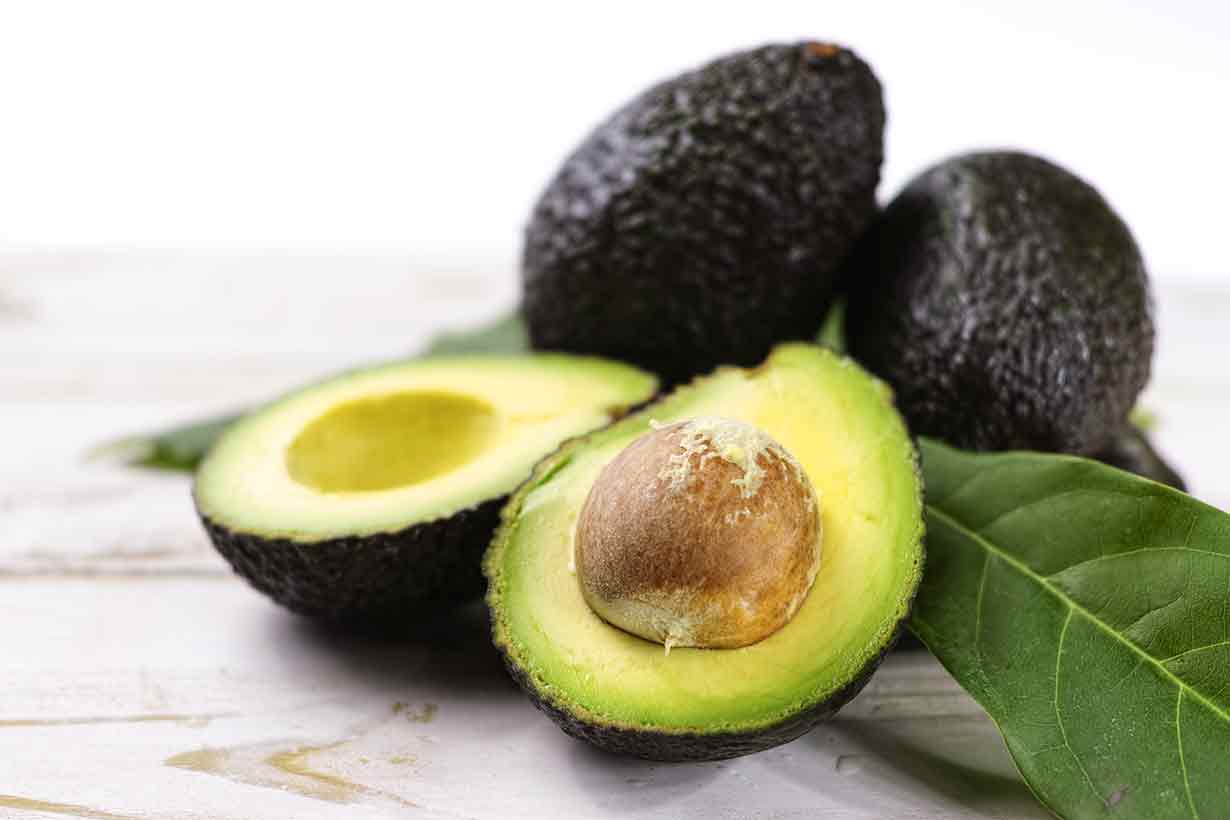The pomegranate is a popular fruit variety with some interesting nutritional benefits.
This article provides an overview of pomegranate fruit, its characteristics, nutritional values, and potential benefits.
Table of contents
What Are Pomegranates?

The pomegranate is a juicy fruit that grows throughout the Mediterranean, Indian subcontinent, parts of Central and South-East Asia, some areas of Africa, and parts of the United States (1).
Known scientifically as Punica granatum, the pomegranate looks slightly like a red apple from its outer appearance.
However, cutting the fruit in half reveals hundreds of little red seeds. These seeds are called arils, and they are part of the pomegranate that people consume.
The arils have a sweet and juicy taste, and they are a good source of vitamins, fiber, and polyphenols.
People often eat pomegranates as the whole fruit, but many different food and drink products feature pomegranates.
For example, pomegranate juice is popular around the world. Also, some Middle-Eastern dishes contain pomegranate seeds as an ingredient.
The pomegranate tree is thought to have originated within the region from modern-day Iran to the Himalayas in Northern India (1).
Botanically, the pomegranate is a berry.
Nutrition Facts
Here are the full nutritional values for a 282-gram pomegranate fruit.
The source of the nutritional data is the USDA’s FoodData Central database. Daily values have been calculated using the FDA’s published daily values (2, 3).
| Name | Amount | % Daily Value (DV) |
|---|---|---|
| Calories | 234 kcal | |
| Carbohydrate | 52.7 g | 19% DV |
| Fiber | 11.3 g | 40% DV |
| Sugars | 38.6 g | |
| Fat | 3.3 g | 4% DV |
| Saturated | 0.338 g | 2% DV |
| Monounsaturated | 0.262 g | |
| Polyunsaturated | 0.223 g | |
| Omega-3 | 0 g | |
| Omega-6 | 0.223 g | |
| Protein | 4.71 g | 9% DV |
Vitamins
- Vitamin K: 39% of the daily value
- Vitamin C: 32% DV
- Folate, DFE: 27% DV
- Pantothenic acid (B5): 21% DV
- Thiamin (B1): 16% DV
- Vitamin B6: 12% DV
- Riboflavin (B2): 11% DV
- Vitamin E: 11% DV
- Niacin (B3): 5% DV
- Choline: 4% DV
- Vitamin B12: 0% DV
- Vitamin A, RAE: 0 % DV
- Vitamin D: 0 % DV
(DFE refers to dietary folate equivalents, ‘RAE’ refers to retinol activity equivalents).
Minerals
- Copper: 50% DV
- Manganese: 15% DV
- Potassium: 14% DV
- Zinc: 9% DV
- Phosphorus: 8% DV
- Magnesium: 8% DV
- Iron: 5% DV
- Selenium: 3% DV
- Calcium: 2% DV
- Sodium: <1% DV
Phytochemical Content
Pomegranates are a rich source of polyphenols.
Scientific research has demonstrated that pomegranates contain significant amounts of the following polyphenols (4, 5, 6):
- Ellagic acid
- Gallic acid
- Punicalin
- Punicalagin
It is thought that the phytochemicals found in pomegranate may account for some of the fruit’s potential benefits recorded in human trials (7).
Benefits of Pomegranate
According to nutritional data and scientific research, here is a summary of some of the proven and potential benefits of consuming pomegranate.
Pomegranates Are An Excellent Sources of Folate and Vitamins C and K
As shown in the nutrition facts section, pomegranate provides a rich source of folate and vitamins C and K.
Folate is an essential water-soluble vitamin that plays a crucial role in healthy pregnancies and helps to prevent complications, such as neural tube defects (8, 9).
Vitamin C plays a vital role in the immune system and, when consumed at sufficiently high levels, may help to lower the risk of various chronic diseases (10, 11).
Vitamin K is an important nutrient for bone health, and the body requires it for blood clotting (12, 13, 14).
Pomegranates Provide a Broad Range of Essential Minerals
Not only do pomegranates offer high levels of several vitamins, but they also provide good amounts of numerous minerals.
For instance, a single pomegranate fruit supplies more than 10% of the recommended daily value for copper, manganese, and potassium. Further, one pomegranate contains more than 5% of the recommended daily value for zinc, phosphorus, magnesium, and iron (2, 3).
High In Fiber
The pomegranate is certainly a high-fiber fruit with more than 11 grams of fiber per fruit (2).
A higher dietary fiber intake is consistently and significantly associated with many benefits.
Most notable among these, fiber is strongly associated with a lower risk of cancer, cardiovascular, and all-cause mortality (15, 16).
Pomegranate May Be Beneficial For Arthritis
Some recent research has suggested that pomegranate may contain components that could benefit people with arthritis.
For instance, a 2021 systematic review investigating the effects of pomegranate on osteoarthritis was published in the Health Promotion Perspectives journal (17).
The review looked at twenty-three studies on pomegranate’s effects on osteoarthritis, covering human, animal, and cell studies. Overall, the review determined that pomegranate has a beneficial impact on several clinical features of osteoarthritis and lowers inflammation and symptoms of oxidative stress.
However, the authors noted a need for further large human studies to investigate the area better.
A further systematic review, published in the International Journal of Clinical Practice in 2021, examined the potential effects of pomegranate on rheumatoid arthritis (18).
Based on twelve studies, the systematic review found that pomegranate can lower inflammation and oxidative stress in rheumatoid arthritis.
The authors assert that their results justify further clinical research into the potential beneficial effects of pomegranate on rheumatoid arthritis.
Pomegranate Juice May Lower Blood Pressure
Pomegranate juice offers a concentrated source of the nutrients and polyphenols available in pomegranate.
Research has looked into the potential beneficial effects of pomegranate juice on various health markers.
A 2017 systematic review published in Pharmacological Research analyzed eight randomized controlled trials (RCT) that investigated the effect of pomegranate juice consumption on blood pressure (19).
The results showed that pomegranate juice lowered systolic blood pressure irrespective of the study length or dose consumed (mean: -4.96 mm Hg).
However, there was only a borderline significant effect on diastolic blood pressure when the pomegranate juice dose was higher than 240 ml.
May Lower Inflammation and Improve Oxidative Stress
While some inflammation is a normal part of healing and repair, chronically high levels of inflammation are associated with numerous chronic diseases (20).
Oxidative stress is characterized by an excessively high level of free radicals in the body that overwhelm the body’s defense (antioxidant) system. Once again, chronically high levels of oxidative stress can cause damage to various tissues, and it is linked with chronic disease (21, 22).
Interestingly, findings from several studies suggest that pomegranate may potentially lower inflammation and oxidative stress levels. However, the results are somewhat mixed.
Oxidative stress
A recent 2022 systematic review and meta-analysis of 21 RCTs examined the impact of pomegranate on oxidative stress. The review was published in the Clinical Nutrition ESPEN journal (23).
The study found that pomegranate lowered several oxidative stress markers, but there was heterogeneity between the included trials. Heterogeneity means that not all trials showed the same results, which casts more doubt on the finding than consistent results.
As a result, the researchers argue that more well-designed RCTs are necessary to confirm these potential beneficial effects of pomegranate on oxidative stress.
Inflammation
Some studies have demonstrated that pomegranate may help to lower inflammation levels:
- In 41 patients using hemodialysis, a randomized crossover trial in 41 patients examined the effect of pomegranate juice on cardiometabolic risk factors and inflammation. Compared to the control group, the pomegranate juice group had significantly increased antioxidant capacity and decreased levels of the inflammatory markers, malondialdehyde and interleukin-6 (IL-6) (24).
- A 2014 RCT published in the Journal of Research in Medical Sciences examined the effects of pomegranate juice on inflammation in patients with type 2 diabetes. The results showed that, compared to the control group, there was a 32% and 30% decrease in inflammatory markers C-reactive protein (CRP) and IL-6, respectively, in the pomegranate juice group (25).
There Are Many Different Cultivars of Pomegranate
Most of us think of the red fruit when we hear ‘pomegranate.’
Interestingly, there are numerous pomegranate cultivars, some of which are pretty unique.
Based on information from Purdue University’s NewCROP resource for pomegranate, here is a list of some of the most famous pomegranate cultivars and their characteristics (26):
| Cultivar name | Color | Size | Notable characteristics |
|---|---|---|---|
| Alandi | Red/pink | Medium | |
| Dholka | Yellow/red with purple-white or white seeds | Large | |
| Kabul | Dark red with dark red seeds | Large | |
| Muscat red | Red | Small to medium | Juicy |
| Muscat White | Creamy white and pink, cream-colored seeds | Large | Sweet taste |
| Paper shell | Pale yellow and pink, reddish-pink seeds | Medium to large | Juicy |
| Poona | Dark red and grayish, with orange-red or pink-red seeds | Large | |
| Spanish Ruby | Bright red, rose-colored seeds | Small to medium | |
| Vellodu | Red | Medium to large | Very juicy |
| Wonderful | Dark purple to red with red seeds | Large | Oblate shape |
Some cultivars do not have the pomegranate’s characteristic red outer appearance. For example, the ‘Muscat white’ cultivar has a creamy surface with cream-colored seeds inside.
Pomegranate Seeds Have Many Culinary Uses

While most eat pomegranate as fruit, some exciting recipes feature pomegranate seeds.
For instance, pomegranate seeds are an ingredient used in some cooked dishes in the Mediterranean and Middle-East regions.
One of the most famous is Persian pomegranate chicken (there is a good recipe here).
Aside from eating them plain, here are some other ways to eat pomegranate seeds:
- Add them to cereal or yogurt with nuts/seeds
- Make pomegranate juice
- Use pomegranate seeds in a smoothie
- Put them in curries and thick stews
- Add pomegranate seeds to a stir-fry
- Combine pomegranate seeds with other chopped pieces of fruit and berries to make a fruit salad
Final Thoughts
Pomegranates are tasty, nutrient-rich fruit with several potential benefits.
Among the nutrients they provide, they are an excellent source of fiber, vitamins C and K, and copper.
Additionally, pomegranates taste great and are a versatile ingredient that we can use in many different ways.









Do different cultivars of pomegranates have different nutritional profiles? We bought a house with a Dixie Sweet /Utah Sweet variety and it’s new to us without the usual strong tart flavor of the Wonderful we’re familiar with and we were wondering about its nutritional values.
I imagine they would vary slightly (especially for nutritional values ‘per fruit’ when some cultivars are bigger than others). However, I doubt there will be much difference of note on a per-gram basis.